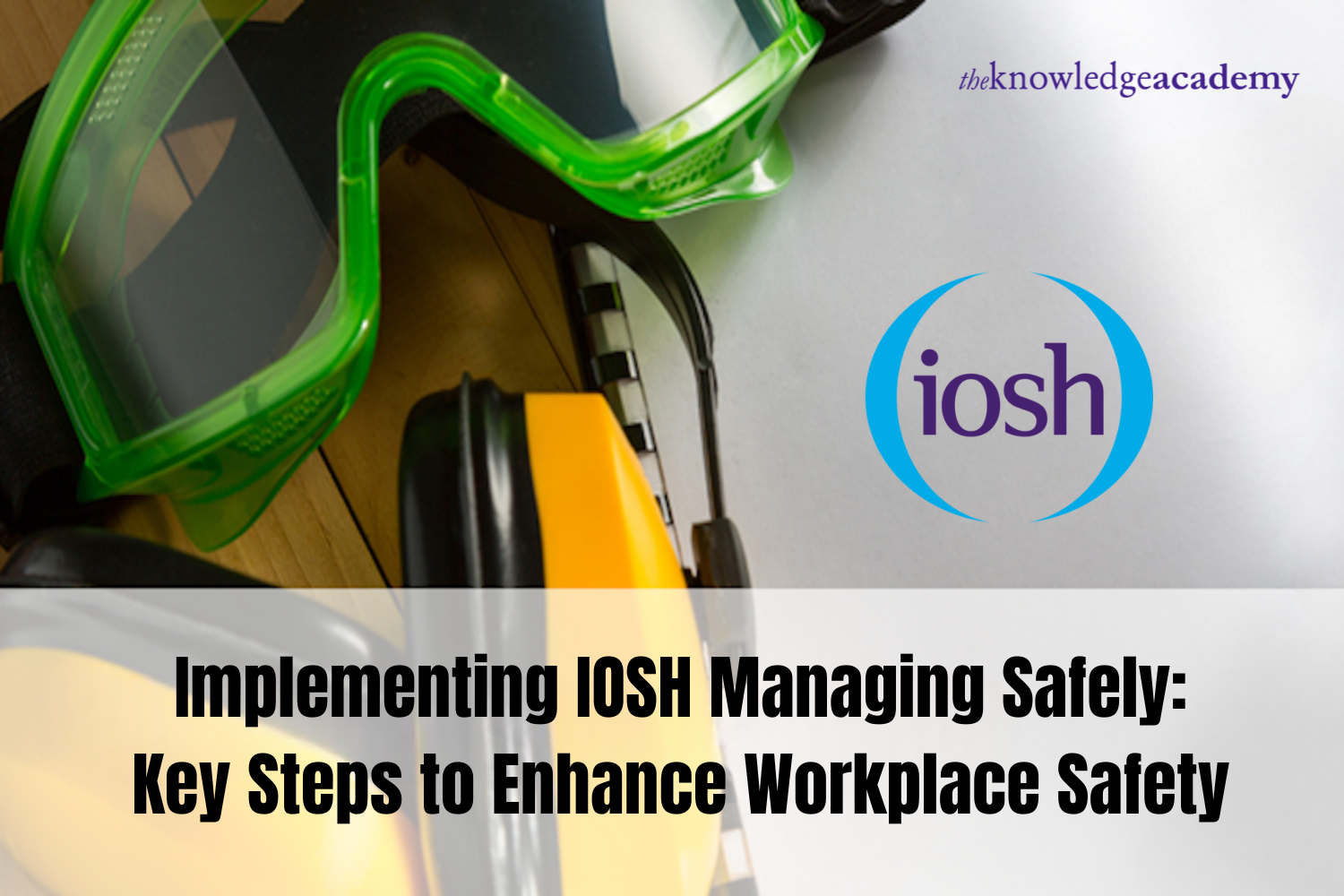Implementing IOSH Managing Safely: Key Steps to Enhance Workplace Safety
What if a few simple actions could help reduce risks at work and even prevent serious accidents? That is exactly what the IOSH Course aims to do. It is designed to help team leaders, supervisors, and managers build a safer working environment. If you are preparing to take this path, you might already be looking at IOSH Managing Safely Exam Questions and wondering what the process involves.
Let us break it down and explore the key steps that turn safety knowledge into practical results.
Table of Contents
- Essential Steps to Effectively Implement IOSH Managing Safely
- Conclusion
Essential Steps to Effectively Implement IOSH Managing Safely
Implementing IOSH Managing Safely goes beyond passing an exam; it’s about building safer habits across your team. Below are the key steps that turn The Institution of Occupational Safety and Health or IOSH principles into everyday workplace safety actions:
1. Start With a Strong Foundation
Before making improvements, you must clearly understand what constitutes effective safety management. This is where the IOSH course starts. It goes on risk management, legal obligations, and incident investigation techniques.
This foundation enables you to think more deeply than just checking boxes. It promotes proactive safety thinking. By the end of the course, you understand why every action matters and not only know what to do. That is the first change in perspective that creates a safer work environment.
2. Make Risk Assessment a Daily Habit
Many managers view risk assessment as a formal task. In reality, though, it ought to come more naturally. One of the course's main lessons is recognising risks before they become issues.
Use the IOSH approach to divide the risk assessment into smaller, daily observations rather than completing it all at once every few months. Is that floor-mounted wire a trip hazard? Is that equipment operating properly? This way of thinking promotes ongoing safety awareness rather than only compliance.
3. Turn Knowledge Into Practical Action
Completing the course is just the beginning. Whether you put what you've learnt into practice is the true test. The importance of the IOSH Managing Safely test questions is evident now. They are not merely memory tests. They will demonstrate your ability to consider safety scenarios in real-time.
Put that ability to use on the earth. Consider actual circumstances when drafting policies or establishing procedures. Could a step be misinterpreted? Could the hurried nature of the assignment force them to overlook something crucial? Convert theory into practices that align with human behaviour.
4. Engage Your Team in the Process
A single manager cannot manage safety alone. According to the training, managing relationships is a necessary part of managing safely. When something doesn't seem right, the team must speak up. You want them to maintain excellent practices even when no one is looking.
Begin with easy dialogues. Find out what employees believe could go wrong. Make safety checklists with them. When employees feel like they are a part of the solution, they follow it more carefully. It is this shared obligation that sustains safety.
5. Measure What Matters
Only when you can monitor improvements do they matter. This implies that you need a method to monitor your progress and well-defined safety objectives. This does not entail establishing lofty, intricate goals. Simple and practical indications are encouraged in the course.
How many near-misses, for instance, are reported every week? Are regular inspections completed on schedule? By making small adjustments, such as monitoring this data, you can determine whether your safety culture is strengthening or deteriorating.
6. Create a Learning Culture
Nobody ever does anything perfectly the first time. Errors occur. However, they shouldn't be disregarded or penalised. Rather, they ought to be employed to increase employee safety. The course emphasises how to conduct impartial and transparent incident investigations.
Promote candid reporting. Express gratitude to everyone who recognises a risk or acknowledges a mistake. The problem will be resolved, and the knowledge will be imparted. This prevents issues from happening again and raises awareness of how safety functions in the real world.
7. Build Confidence Before the Assessment
Exam questions for IOSH Managing Safely can be difficult for people who will take the final exam. However, the exam isn't meant to deceive you. It emphasises practical workplace reasoning. To assess your ability to apply the main concepts, use practice questions.
Rehearse scenarios similar to those at work. Consider your action if a hazard was discovered, an accident occurred, or someone disregarded safety precautions. This will boost your confidence in your role and aid with the test.
8. Keep Safety in Focus Every Day
The fact that safety is a continuous process is among the most crucial lessons learnt. It's a habit. Although a course cannot prevent every accident, it can provide you with the means to lessen them. Include those tools in your everyday thought process.
Use toolbox presentations and posters to keep safety at the forefront. Reward safe behaviour. Examine occurrences in public. These small routines help your team stay on the same course and reinforce all you've learnt.
Conclusion
IOSH Managing Safely is not just a certificate. It is a shift in how you think about work. It gives you the confidence to make real changes and protect your team. Whether preparing for the exam or applying what you learned, each step leads to a safer, smarter workplace. A certification in safety offered by The Knowledge Academy can assist in your career and help you build a safer future for your team.




